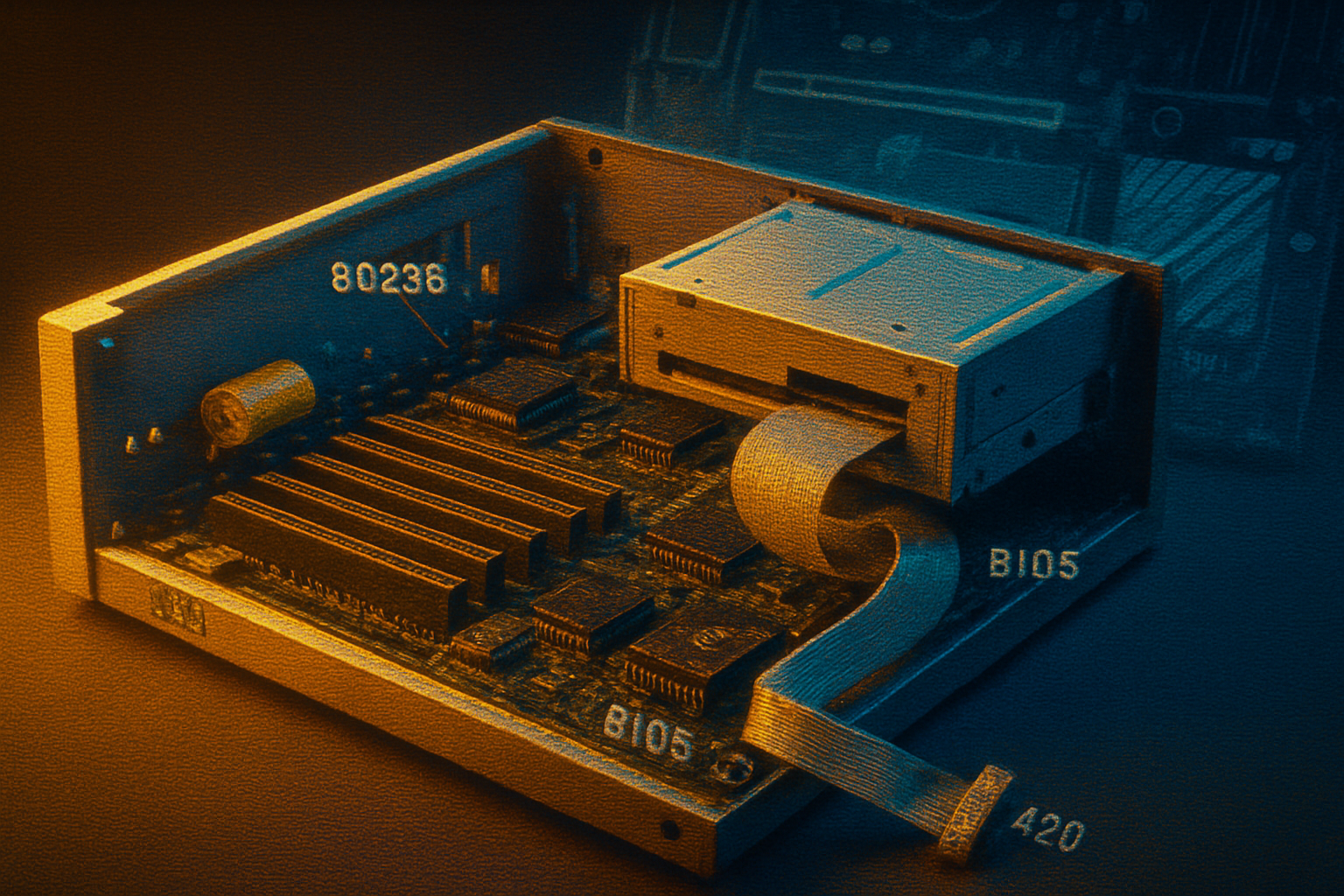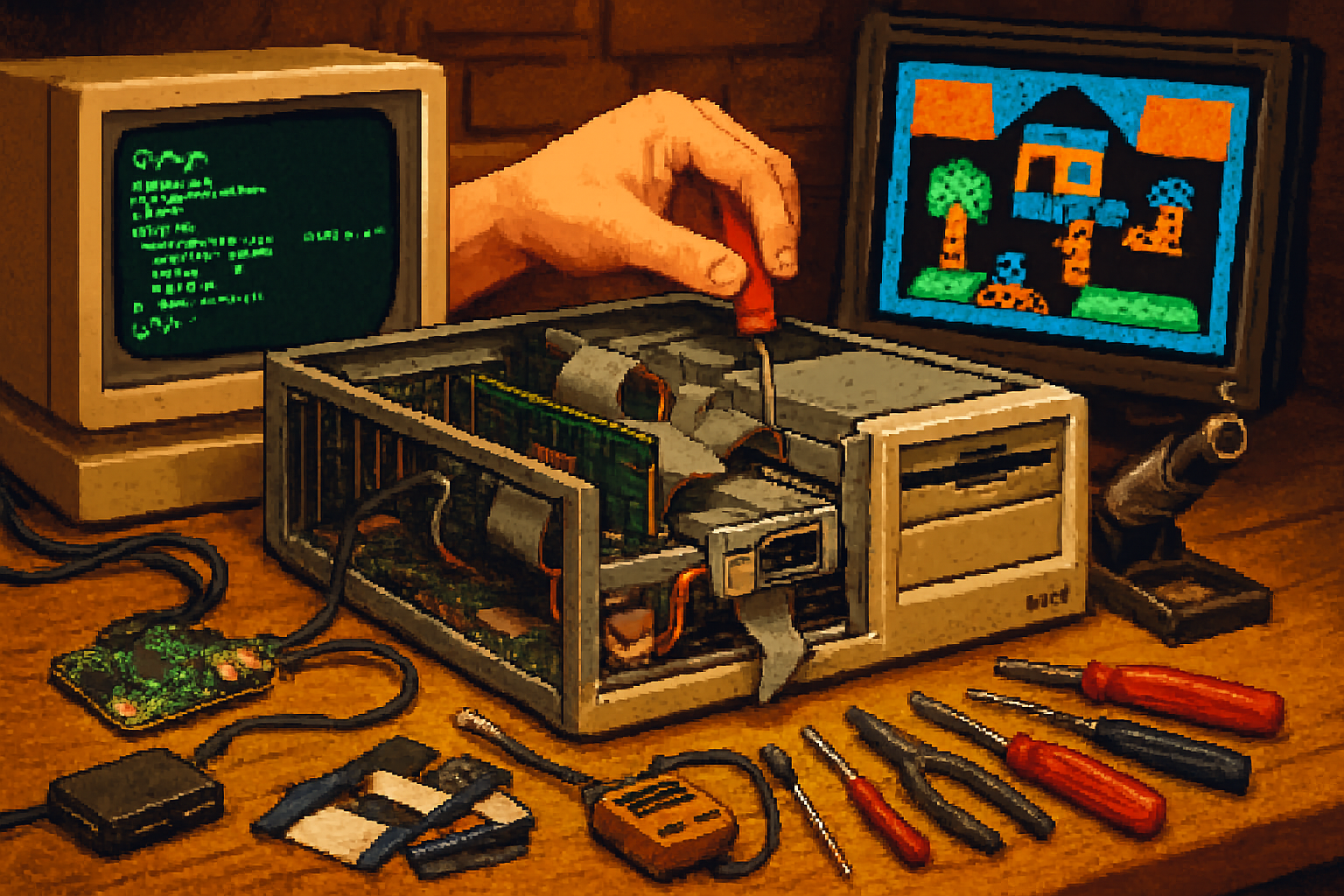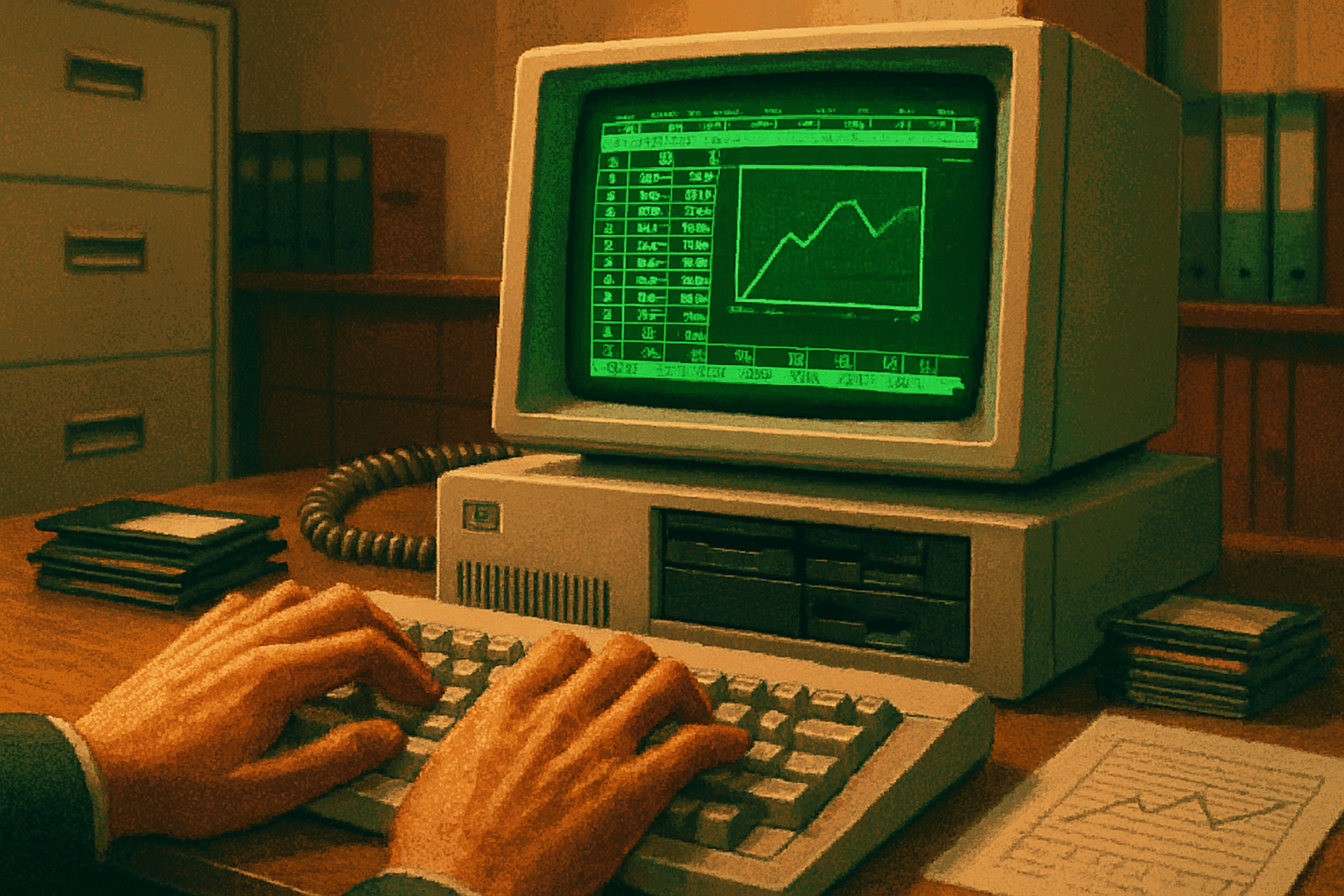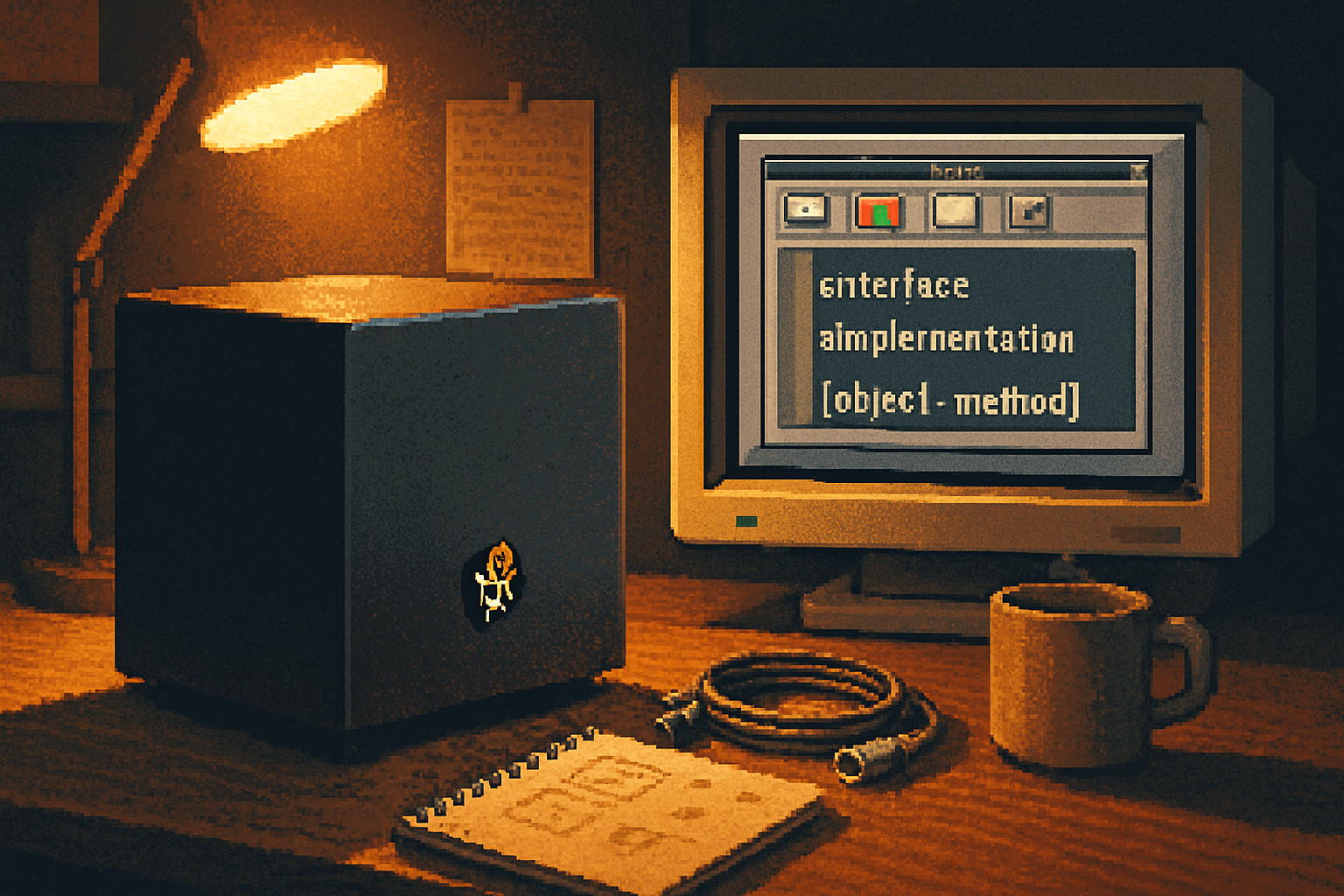· retrotech · 7 min read
The IBM 5150: A Time Capsule of Innovation
How a beige box sold in 1981 - the IBM 5150 - rewired business, birthed an industry of clones, handed Microsoft the keys, and quietly seeded the technical conventions that still run the world today.
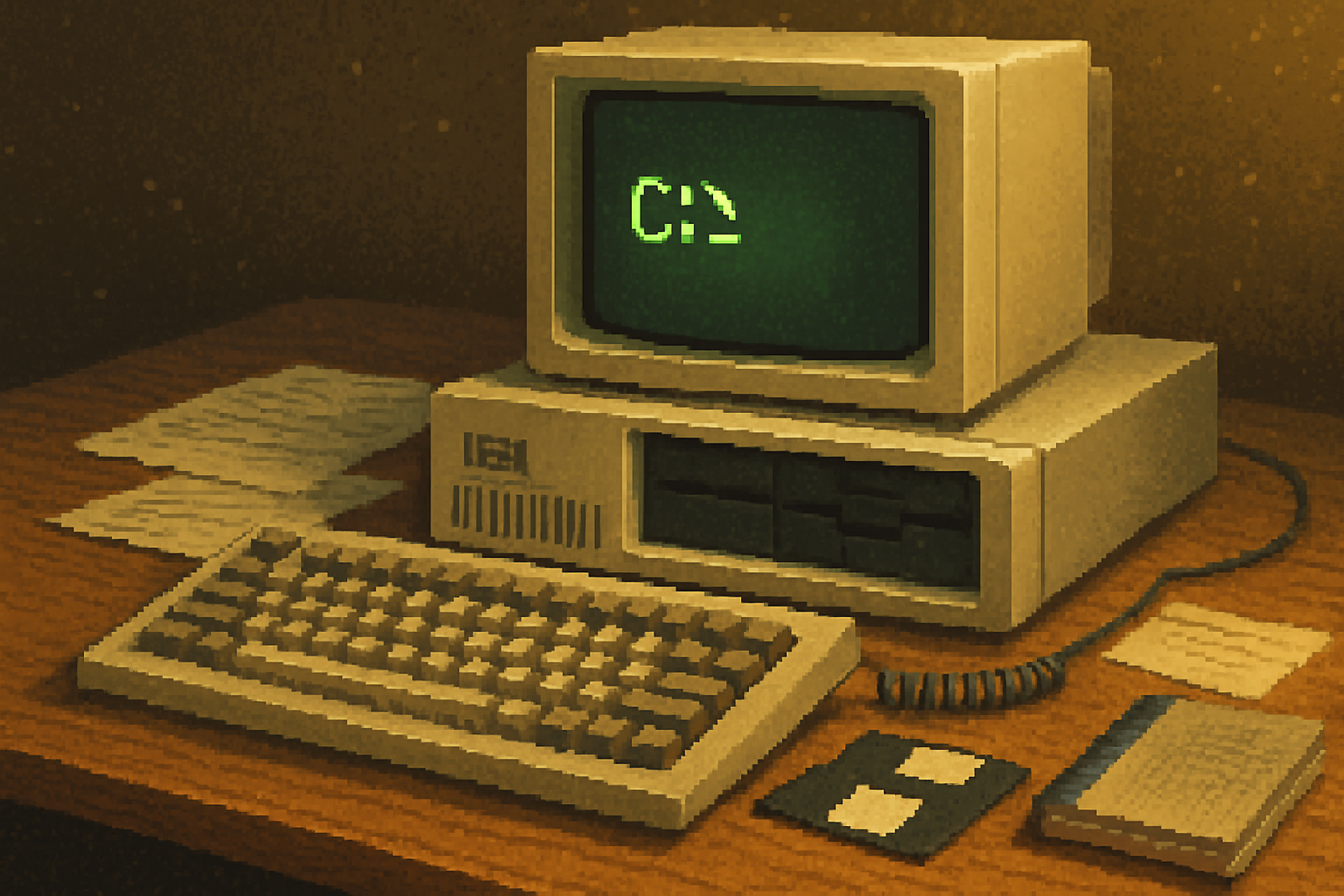
Imagine a shop window in 1981: a modest beige box with a keyboard, a glowing green text screen, a pair of floppy disks that looked suspiciously like drink coasters. It didn’t look like a revolution. It looked like furniture.
That furniture was the IBM 5150. To the salesperson it was another product. To corporate buyers it was credibility. To a generation of engineers and entrepreneurs it was permission.
A deliberate gamble - and an odd one
IBM wasn’t building the 5150 because the company suddenly fell in love with hobbyists. IBM built it because midsize businesses were buying microcomputers, and IBM’s market - conservative, ledger-loving, rule-following - was walking away. The 5150, introduced on August 12, 1981, was IBM’s answer: a fast, relatively affordable personal computer meant to stop the outflow of corporate IT budgets.
But IBM made that answer strangely modern: instead of designing every chip and socket in-house, they assembled the machine from off‑the‑shelf parts. The heart was an Intel 8088 CPU running at 4.77 MHz (an 8‑bit external bus with 16‑bit internals). The operating system was PC‑DOS - Microsoft’s product licensed to IBM. Expansion used an open bus architecture that would soon be called the Industry Standard Architecture (ISA). The BIOS sat in ROM, the floppy drives were 5.25-inch disks, and display options ranged from monochrome text to basic color graphics.
In other words: familiar ingredients - but mixed in a way the industry had never tasted before.
Why ‘open’ mattered more than IBM realized
IBM’s design choices read like a how-to manual for an industrial revolution. The company intentionally used third‑party chips and allowed expansion cards in a standardized set of slots. That meant other manufacturers could make parts, cards, and - crucially - complete clones.
This decision made the 5150 simultaneously safe and explosive. For enterprises, safety: you could buy an IBM and expect support and paperwork you could hand to accounting. For the market: an open platform invited competition, rapid iteration, and price collapse. Within a few years, dozens of companies were making IBM-compatible PCs, and a whole ecosystem sprung up: software, peripherals, clones.
If the IBM 5150 is oxygen, openness was its spark.
The legal cleverness that created an industry
If there’s a hero in the story of how clones took over, it’s not a person but a method: clean‑room reverse engineering. Competitors needed a BIOS that behaved like IBM’s without copying its code. Companies such as Compaq (and later Phoenix) used teams to study behavior and then had separate engineers write code based only on functional specifications. That avoided copyright infringement and produced compatible BIOSes.
The result was a market where compatibility, not legal ownership, decided fate. Microsoft kept the right to license MS‑DOS elsewhere. Intel kept making compatible processors. The perfect storm: open architecture + licensable OS + commodity CPUs.
Technology inside the beige box (the bits that mattered)
- CPU - Intel 8088, 4.77 MHz - modest by modern standards, but fast and cheap then. The 8088’s 8‑bit bus simplified manufacturing while preserving 16‑bit performance internally.
- Memory - shipped with as little as 16 KB, expandable - the era of watching bytes like they were gold dust.
- Storage - 5.25” floppy drives (160 KB or 320 KB formats were common early on). Hard drives were optional and rare at first.
- Graphics - Monochrome Display Adapter (MDA) for crisp text, and an early color option (CGA) for primitive graphics and, later, games.
- I/O and expansion - the open slot bus that evolved into ISA - the physical handshake that let third parties innovate.
These were not glamorous specs. They read like constraints. Constraints, however, are the raw material of engineers.
The cultural ripple effects
The 5150’s importance isn’t just technical. It altered incentives and behavior.
- Software got serious. Pre‑IBM, applications were a mixture of academic curiosities and hobbyist oddities. An IBM stamp legitimized the PC for business. Developers like Lotus (with Lotus 1‑2‑3) and Microsoft (with their expanding toolchain) targeted the platform, accelerating a virtuous cycle.
- IT departments were born anew. Buying a PC was no longer an underground act of tinkering. It could be justified, budgeted, and standardized.
- Gaming and creativity found a platform. Early PC games and DTP tools used the 5150’s successors as a canvas. Not pretty, but effective.
Think of the 5150 as the moment the desktop left the lab and sat down in the office cafeteria.
What followed - the unpurchased side effects
There is a delicious irony here. IBM released the PC to hold market share. Instead, it created the conditions for that market to repudiate IBM’s control. Within a decade, the term “IBM PC” would mostly designate compatibility rules, not IBM’s supremacy. Companies like Compaq, Dell, Gateway, HP, and countless others built fortunes on compatibility. Microsoft became the software gatekeeper. Intel became the CPU standard bearer.
IBM remained large and respectable. But the center of gravity in the computer industry moved away from proprietary control and toward standardization and commoditization. That’s not small potatoes: it’s the business model we now take for granted in hardware and platforms.
The architecture that keeps whispering in modern machines
Trace today’s PCs, servers, and even many embedded devices back a few knots and you’ll find DNA from the 5150:
- x86 instruction set lineage. Intel’s designs, started long before the 5150, rode the PC wave to dominance. The 8088’s family tree-unchecked and enormously iterated-still powers billions of devices.
- BIOS traditions and boot sequences. Even after UEFI modernized firmware, the rituals first codified around the IBM PC shaped expectations for booting and device initialization.
- File systems and software distribution models. FAT file systems and MS‑DOS-era conventions influenced early Windows and cross‑platform compatibility practices.
- The value of an open (or at least standardized) hardware bus. Expansion slots taught the industry that a platform’s extensibility is a moat and a market.
The 5150 wasn’t the sole cause of these legacies. But it was the catalyst that amplified them.
Why this still matters
If you could open a time capsule containing a 5150 and a modern laptop, you’d see continuity, not rupture. The user expectations - plug in, boot up, run software - are the same. Business models evolved from that baseline. Standards and ecosystems became more valuable than proprietary perfection.
In short: the 5150 didn’t just ship a computer. It shipped an industry ethos: make things interoperable, let others build around you, and you’ll win the market even if you lose some control.
Quick list: The 5150’s lasting gifts (and curses)
- Gift - Standardization that enabled mass markets and fast innovation.
- Gift - The x86 ecosystem - predictable APIs for decades.
- Gift - A software market that could scale - Microsoft’s licensing playbook, for better or worse.
- Curse - Commoditization of hardware margins - manufacturing became a race to the bottom.
- Curse - Platform concentration - success breeds central control (hello, Silicon Valley oligopolies).
Final thought - a time capsule you can still hear
Put a 5150 on a desk and you hear more than a whirring fan. You hear an argument: portability versus control, proprietary polish versus an open invitation. That argument still shapes every new platform - phones, cloud providers, app stores. The IBM 5150 matters not because it was perfect, but because it taught an entire generation how to build a market.
To see it another way: the 5150 was not the last word on the personal computer. It was the punctuation mark that made the sentence readable. And because that sentence became part of everyday life, its grammar still governs how we write software and sell hardware today.
Further reading
- IBM’s own history page on the original PC: https://www.ibm.com/ibm/history/exhibits/pc/pc_1.html
- A comprehensive overview: https://en.wikipedia.org/wiki/IBM_Personal_Computer
- Intel 8088: https://en.wikipedia.org/wiki/Intel_8088
- MS‑DOS history: https://en.wikipedia.org/wiki/MS-DOS
